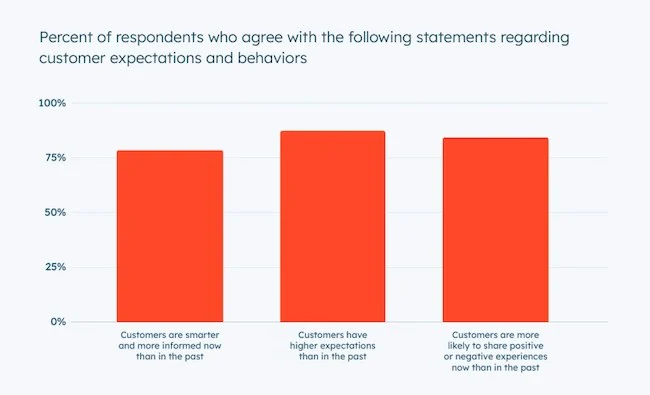4 Keys to be a Successful CEO

1. Deciding with speed and conviction.Legends about CEOs who always seem to know exactly how to steer their companies to wild successseem to abound in business. But we discovered that high-performing CEOs do not necessarilystand outfor making great decisions all the time; rather, they stand out for being more decisive. They makedecisions earlier, faster, and with greater conviction. They do so consistently—even amid ambiguity,with incomplete information, and in unfamiliar domains. In our data, people who were described as“decisive” were 12 times more likely to be high-performing CEOs.Good CEOs realize that a wrong decision may be better than no decision at all.Interestingly, the highest-IQ executives we study, those who relish intellectual complexity, sometimesstruggle the most with decisiveness. While the quality of their decisions is often good, because of theirpursuit of the perfect answer, they can take too long to make choices or set clear priorities—and theirteams pay a high price. These smart but slow decision makers become bottlenecks, and their teamseither grow frustrated (which can lead to the attrition of valuable talent) or become overcautiousthemselves, stalling the entire enterprise. So, it’s no surprise that when we looked more closely at theexecutives who were rated poor on decisiveness, we found that only 6% received low marks becausethey made decisions too quickly. The vast majority—94%—scored low because they decided too little,too late.High-performing CEOs understand that a wrong decision is often better than no decision at all.Decisive CEOs recognize that they cannot wait for perfect information. But they do work actively tosolicit multiple points of view and often poll a relatively small,carefully cultivated “kitchen cabinet” oftrusted advisers who can be counted on for unvarnished opinions and sound judgment.To that end, successful CEOs also know when not to decide. Stephen Kaufman, the former CEO of ArrowElectronics, suggests that itis all too easy to get caught up in a volley of decision-making. He advisespausing briefly to consider whether a decision should actually be made lower down in the organizationand if delaying it a week or a month would allow important information to emerge without causingirreparable harm.But once a path is chosen, high-performing CEOs press ahead without wavering. And if decisions don’tturn out well? Our analysis suggests that while every CEO makes mistakes, most of them are not lethal.We found that among CEOs who were fired over issues related to decision making, only one-third losttheir jobs because they had made bad calls; the rest were removed for being indecisive.2. Engaging for impact.Once CEOs set a clear course for the business, they must get buy-in among their employees and otherstakeholders. We found that strong performers balance keen insight into their stakeholders’ prioritieswith an unrelenting focus on delivering business results. They start by developing an astuteunderstanding of their stakeholders’ needs and motivations and then get people on board by driving forperformance and aligning them around the goal of value creation. In our data, CEOs who deftly engagedstakeholders with this results orientation were 75% more successful inthe role
CEOs who excel at bringing others along with a plan and execute disciplined communications andinfluencing strategies.When interacting with stakeholders, CEOs are aware of how their moods and body language can affectthe impact of their communications. New CEOs are often surprised by the unintended damage that canbe caused by a stray word or gesture. Every comment and facial expression you make will be read andmagnified 10 times by the organization. Composure is a job requirement, and more than three-quartersof the strong CEO’s demonstrated calm under pressure.CEOs who engage stakeholders do not invest their energy in being liked or protecting their teams frompainful decisions. In fact, both those behaviors are commonly seen in lower-performing CEOs. Instead,the skilled CEOs gain the support of their colleagues by instilling confidence that they will lead the teamto success, even if that means making uncomfortable or unpopular moves. These CEOs do not shy awayfrom conflict in the pursuitof business goals. The ability to handle clashing viewpoints also seems tohelp candidates advance to the CEO’s office.When tackling contentious issues, leaders who are good at engagement give everyone a voice but not avote. They listen and solicit views but do not default to consensus-driven decision-making.None of this means that CEOs should behave as autocrats or lone wolves. Typically, we see “take noprisoners” CEOs last only as long as the company has no choice but to submit to shock therapy. TheseCEOs often get ousted as soon as the business emerges from crisis mode—they lose the support of theirteams or of board members who have grown tired of the collateral damage. It is no coincidence that thecareers of turnaround CEOs are frequently a series of lucrative two-to three-year stints; they put outthe fires and then move on to the next assignment.3. Adapting proactively.For evidence of how important it is for businesses and leaders to adjust to a rapidly changingenvironment, we need to lookno further than the aftermath of Brexit and the recent U.S. presidentialelection. Our analysis shows that CEOs who excel at adapting are 6.7 times more likely to succeed. CEOsthemselves told us over and over that this skill was critical.Most CEOs knowthey must divide their attention among short-, medium-, and long-term perspectives,but the adaptable CEOs spent significantly more of their time—as much as 50%—thinking about the longterm. Other executives, by contrast, devoted an average of 30% of theirtime to long-term thinking. Webelieve a long-term focus helps because it makes CEOs more likely to pick up on early signals. Highlyadaptable CEOs regularly plug into broad information flows: They scan wide networks and diversesources of data, finding relevance in the information that may at first seem unrelated to theirbusinesses. As a result, they sense change earlier and make strategic moves to take advantage of it.Adaptable CEOs also recognize that setbacks are an integral part of changing course and treat theirmistakes as opportunities to learn and grow. In our sample, CEOs who considered setbacks to be failureshad 50% less chance of thriving. Successful CEOs, on the other hand, would offer unabashedly matter-of-fact accounts of where and why they had come up short and give specific examples of how theytweaked their approach to do better next time.4. Delivering reliably






Responses